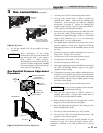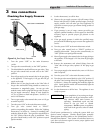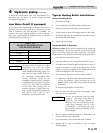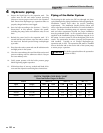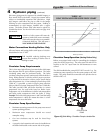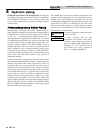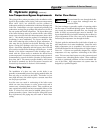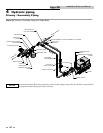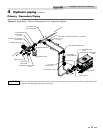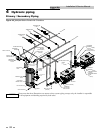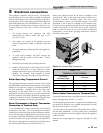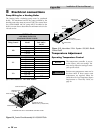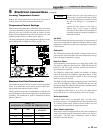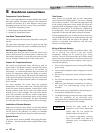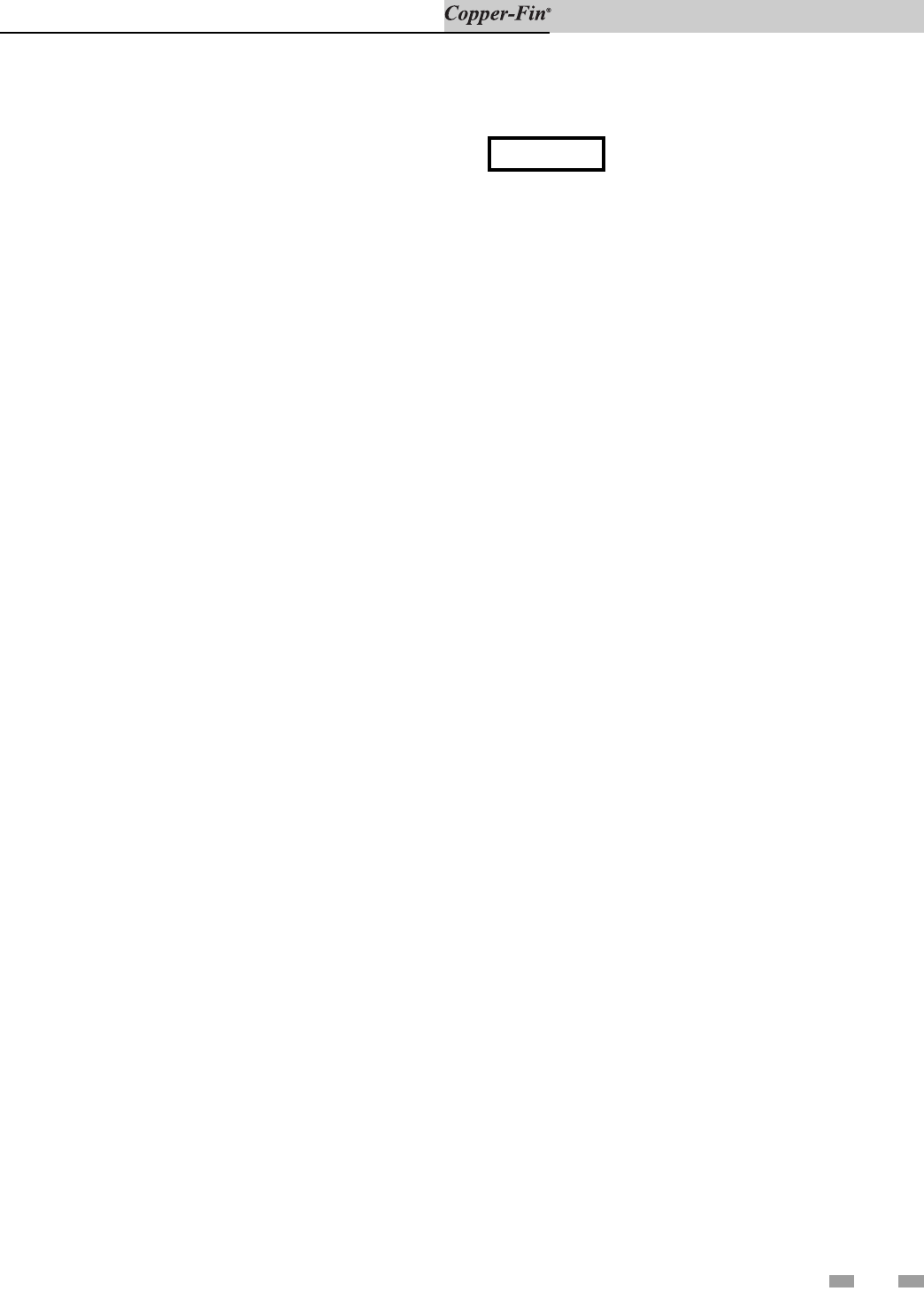
4 Hydronic piping (continued)
29
Installation & Service Manual
Low Temperature Bypass Requirements
This piping is like a primary/secondary boiler installation with a
bypass in the secondary boil er piping. Inlet water temperatures
below 140°F (60°C) can excessively cool the prod ucts of
combustion re sult ing in condensation on the heat exchanger and
in the flue. Condensation can cause operational prob lems, bad
combustion, sooting, flue gas spillage and reduced service life of
the vent system and related components. The bypass allows part
of the boiler discharge water to be mixed with the cooler boiler
return water to in crease the boiler inlet temperature above 140°F
(60°C). This should prevent the prod ucts of com bus tion from
condensing in most in stal la tions. The bypass should be fully
sized with a bal anc ing valve to allow for proper adjustment. A
valve must also be provided on the boiler discharge, after the
by pass. Closing this discharge valve forces water through the
bypass. Start boiler adjustment with the bypass valve in the full
open position and the boiler discharge valve half open. A small
amount of the high er temperature boiler discharge water is
mixed with the system water to maintain the de sired lower
system tem per a ture. A remote low tem per a ture range operator is
recommended to control the boiler operation for temperatures
lower than 100°F. This remote op er a tor should be wired across
the R and W terminals (see Room Ther mo stat Connection and
Terminal Strip Instructions in Section 5 of this manual).
Three Way Valves
The installation of a three way valve on this boiler is not
generally recommended because most piping meth ods allow the
three way valve to vary flow to the boil er. This boiler is a low
mass, high ef fi cien cy unit which requires a constant water flow
rate for proper op er a tion.
Low flow rates can re sult in overheating of the boiler water
which can cause short burner on cycles, system noise and in
extreme cases, a knocking flash to steam. These conditions can
cause operational prob lems and non-warrantable failures of the
boiler. If a three way valve must be installed, please pipe in a
primary/secondary system. Based on boiler sizing and system
flow requirements, this piping may still result in boiler short
cycling.
Boiler Flow Rates
ƽ CAUTION
The maximum flow rate through the boil er
with a copper heat exchanger must not
ex ceed 30 GPM.
The heat exchanger is generally capable of op er at ing within
the flow rates of a residential heating system. Should the flow
rate exceed the maximum allowable flow rate through the
boiler 30 GPM) an external bypass must be installed. The
bypass should be fully sized with a balancing valve to al low for
proper ad just ment of flow. Flow rate can be determined by
measuring the temperature rise through the boiler.
The basic guide for minimum flow in this boiler is based on a
40°F temperature rise in most in stal la tions. Low er flow and a
higher temperature rise is acceptable if the boiler system is
specifically de signed for the char ac ter is tics of a higher tem per -
a ture rise. A system not specifically designed for a higher
temperature rise may experience over heat ing of the boiler
water. This can cause short burn er on cycles, system noise and
in ex treme cases, a knocking flash to steam. These con di tions
can lead to operational problems and non-war rant able fail -
ures of the boiler. High temperature rise systems must be
designed by a qualified engineer.



